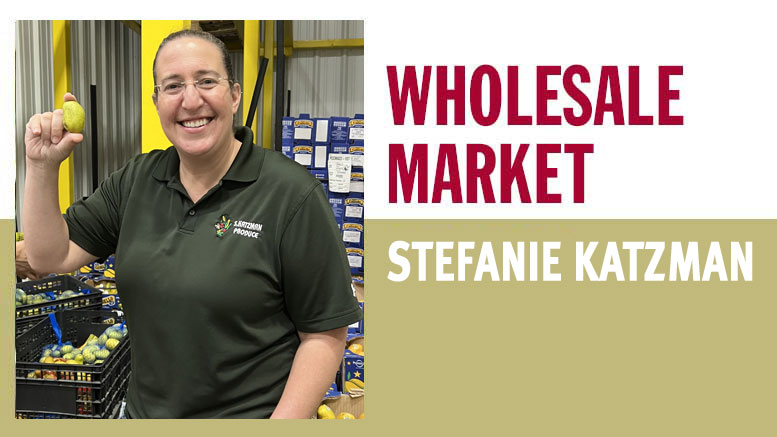Is Local Better?
May 8, 2023 | 4 min to read
In springtime New York, the local produce season begins with excitement for fresh greens from New Jersey and New York. At Katzman, the focus is on sourcing locally to support community businesses while meeting the diverse demands of consumers who want both seasonal and out-of-season products. Local produce is complemented by imports from across the country and over 50 countries to ensure quality and variety. Embracing advanced technology, Katzman aims to deliver high-quality produce despite evolving challenges.

Originally printed in the April 2023 issue of Produce Business.
It’s spring in New York. Looking around Central Park, I see Frisbees, runners and the first picnics of the season. It’s a special time of year in the city coming off the cold winter, and it’s a special time of year in the Northeast for the produce industry: the start of our local season.
Here at Katzman, we got our start with New Jersey farmers, and we have so much appreciation for our local farmers and the produce coming out of New Jersey and New York. This time of year, we start getting excited for the local greens right on the horizon. Come April, May and June, we have products coming strong out of South Jersey including spinach; cilantro; leeks; parsley; mint; wild dandelion; Swiss chard; turnip tops; and so many more. Around late June and early July, we’ll have Jersey blueberries and tomatoes. And of course, you can’t think about New York without thinking about sweet corn from upstate, which starts around mid-July.
This time of year also raises an interesting question: Is local better than everywhere else?
At Katzman, we source locally when we can, and from as far away as we need to, in order to supply fresh product with the best quality and flavor at the fairest prices to our customers.
During the spring and summer seasons, sourcing product locally is a great way to achieve this. We supply product throughout New York City, the tri-state area and the Northeast, so by sourcing product locally from these same regions, we’re able to support our community businesses while reducing logistical expenses, saving time and improving shelf life.
But we can’t supply our customers with everything they want and need by relying only on local products.
New York City, where we’re located, is one of the most diverse and densely populated cities in the world. Our customers want everything, and they want it now. They want seasonal product, yes, but they also want product when it’s out of season. They want product that doesn’t grow in the U.S. They want product even when there are gaps between growing regions.
We can’t supply our customers with everything they want and need by relying only on local products.
This is why local is a great part of our business, but it is not and cannot be the only part of our business.
As a start, we rely on product coming in from all over the country. For example, there is great consumer demand for local, East Coast peaches during the spring and summer, but there are not enough commodities or varieties, and there is not enough volume coming out of this region to fulfill the demand. So we supplement with stone fruit from the West Coast: peaches, plums and nectarines coming out of California, and cherries coming out of Washington and California. Some of the very best stone fruit comes out of the West Coast, and we wouldn’t be able to satisfy our customers without it.
We also need product from countries outside of the United States. Most tropical items don’t grow domestically, and consumers wouldn’t be able to experience items like mangos, pineapples and gooseberries if it weren’t for imports. Additionally, for items that do grow in the U.S., domestic volume isn’t enough to keep up with customer demand. We rely on imports to supplement domestic supply and cover seasonal or weather-related gaps.
Imported items are especially important because of the variety of the customers we serve. In New York City, many of our customers specialize in catering to culturally diverse audiences seeking specific products. We import items from more than 50 countries across six continents to make sure our customers have what the end consumer wants.
We’re also embracing technology more and more. Even as we source product locally, from across the country and from around the world, consumer demand for produce is great, and we need to find product to meet this demand. We’re increasingly working with grower/shippers using vertical farming, greenhouses, hydroponics and new proprietary platforms and methods to combat natural issues that can occur with conventional farming and to prevent gaps in quality and supply.
So is local better than everywhere else? In my opinion, local product is great, but our priority as an industry should be to supply fresh product with the best quality and flavor at the fairest price possible, regardless of where it’s coming from.
At Katzman, we are always seeking ways to supply better, more flavorful, higher quality, longer lasting produce for our customers and the end consumer. And as population growth, climate change, labor challenges and ever-changing consumer taste buds continue to evolve, we will continue to creatively seek new solutions to give our customers what they want.

The author is executive vice president at S. Katzman Produce in New York, NY.
11 of 14 article in Produce Business May 2023

